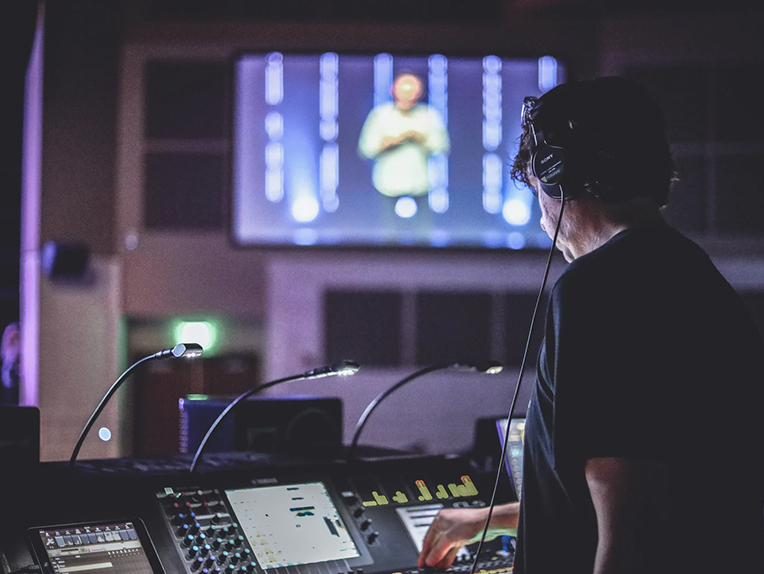
James Attaway: My first priority when stepping up to mix a service is vocal clarity and context. If something is in the way of the vocals, no matter how good it sounds or feels, it has to get out of the way. But the flip side of that coin is that vocals have to be in context to feel right.
Our goal as audio engineers for church services is to bridge the gap between the leadership team and the congregation, and the vocals, both spoken and sung, are the way that people are led and can more easily join in. Although I love the bass guitar, no one else in the congregation has a bass guitar that they can play during worship (at least I hope not…). But they do have a voice to sing with, and people have an easier time singing along when they hear other clear vocals singing. It’s contagious (in a good way).
Jim Yakabuski: I’d say my first priority is being in the moment and remembering that the service isn’t necessarily about production value and the musical performance, it’s about worship. If everyone does their part, the congregation can connect with the songs and the music and worship without distraction. If every musician and technical person passionately engages in their role with the intention of being part of the greater worship experience, we all win and God gets the glory! Having said all that, I try really hard to anticipate my cues, mix the music to the best of my abilities, and not be the distraction.
Chris Huff: If you haven’t got good gain structure, you haven’t got anything. Yet while gain structure tops the list of what I’m going to do first when I mix, there are two other “first priorities.” One is to check the digital console to make sure VCAs are correctly set, channels are in the right mute groups, and effects on channels are turned off. Once you’re burned by a channel where you assumed the compressor was off and you struggle through your gain setting, you learn to review the board.
As far as a true mixing step, I tend to put some basic EQ changes on my channels, such as high-pass filters on the vocals. That helps me clean up the sounds a bit.
Samantha Potter: My first priority when it comes time to mix the service is that the band is already taken care of. Once they’re satisfied with their monitor mixes I can now fully focus on the house mix. I begin by making sure that I’ve got a somewhat usable “dirty” mix. By that I mean all instruments are in the PA and I’m getting sound. It won’t be perfect, but I just need to get something in so that the band can hear what the room will sound like with the system on.
Of course, sitting the vocals on top is the most important line item. When I have very little time for a sound check or a rehearsal, I do this dirty-mix style to get things started so I can sit the vocals on top. Then I can be more discerning and actually mix the band as I would any other show.
When I have the luxury of time I approach things a little differently, but that can be said by any mix engineer. Vocal intelligibility reigns supreme in houses of worship – no ifs, ands, or buts.
